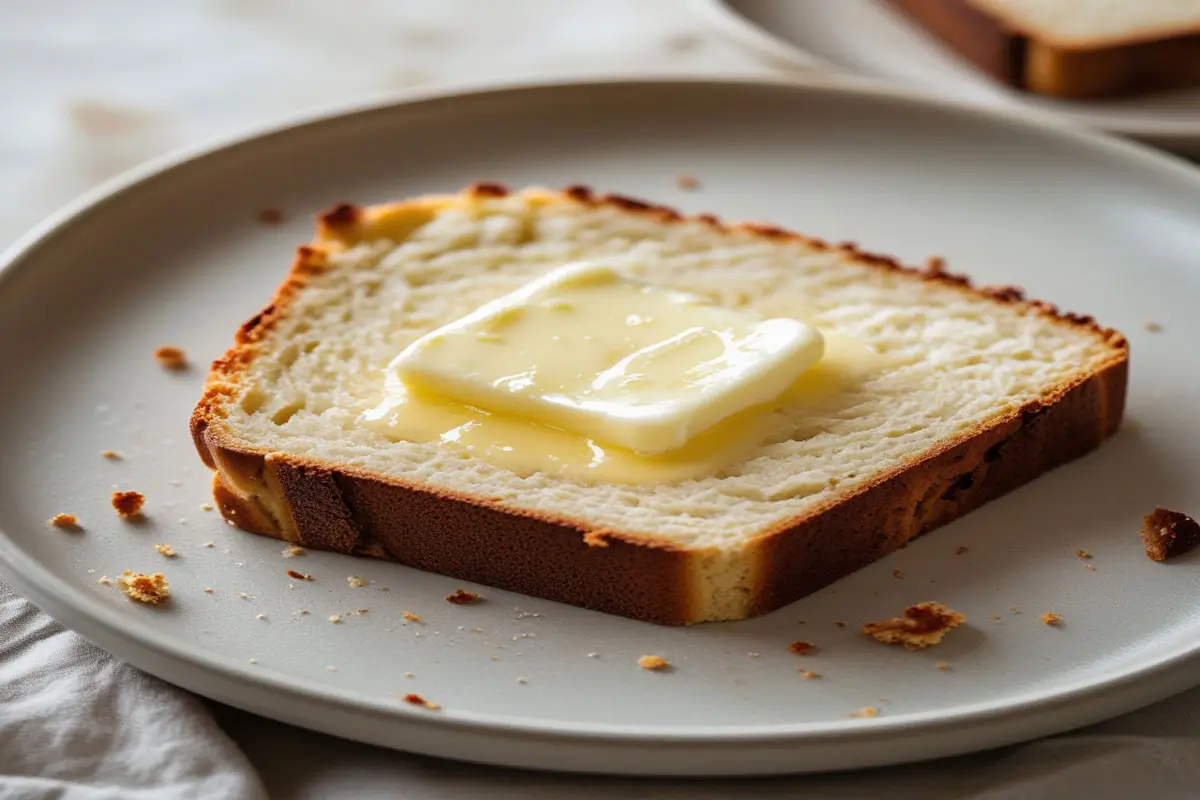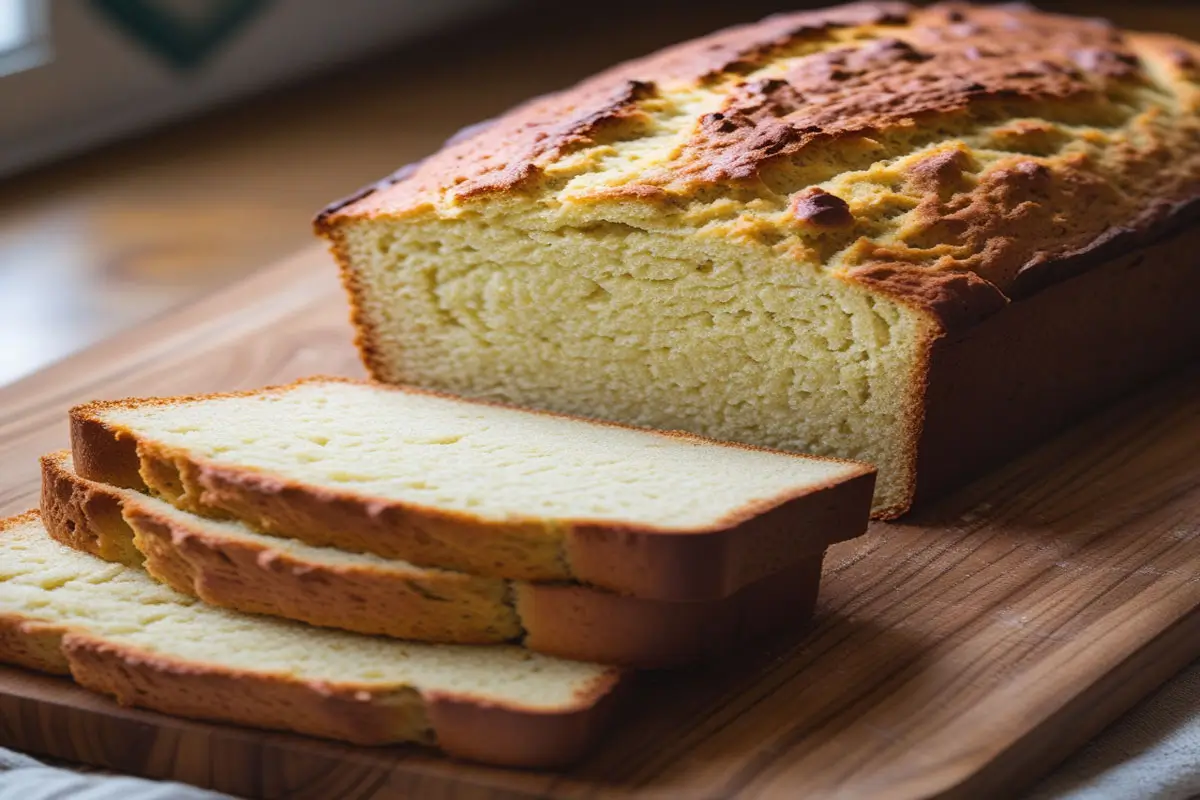When it comes to homemade bread, the yogurt bread recipe stands out for its unique flavor and moist texture. Incorporating yogurt into the dough gives the bread a subtle tang while making it incredibly soft. This recipe is perfect for those who are looking to try something a little different in their baking routine, as yogurt not only enhances the taste but also provides several health benefits. Furthermore, the addition of yogurt makes this bread suitable for a variety of meals, including breakfast, lunch, and dinner. In this guide, we will explore everything from the benefits of using yogurt in bread recipes to step-by-step instructions for making the perfect yogurt bread at home.
Whether you’re an experienced baker or a novice, this yogurt bread recipe is a simple yet satisfying option that can elevate your baking skills. Let’s dive deeper into how yogurt makes all the difference in bread making.
Table of Contents

The Benefits of Using Yogurt in Bread Recipes
Using yogurt in your bread recipe can be a game-changer in the baking world. There are several key benefits that make this ingredient a must-try. First and foremost, yogurt helps to create a moist, tender crumb that you simply cannot achieve with regular bread recipes. In addition to its texture-enhancing qualities, yogurt also offers a slight tangy flavor that adds depth to the taste of your bread.
Moreover, yogurt is rich in probiotics, which are beneficial for your digestive health. This can turn your homemade bread into not just a delicious treat but also a healthier alternative to traditional bread. Furthermore, yogurt adds an element of creaminess that makes the bread lighter and fluffier. The acidity in yogurt can also help to activate the yeast, allowing your bread to rise more efficiently.
Benefits of yogurt in bread:
- Creates a soft and moist texture.
- Adds a subtle tangy flavor.
- Enhances digestive health with probiotics.
- Activates yeast for better rising.
- Results in lighter, fluffier bread.
With all these benefits, it’s no wonder that many bakers are embracing yogurt as a key ingredient in their bread-making process.
Key Ingredients for Making Yogurt Bread
To make a delicious yogurt bread recipe, you’ll need a few essential ingredients. Thankfully, most of these are kitchen staples that you probably already have on hand. Below is a list of the core ingredients that contribute to the unique texture and flavor of yogurt bread:
- Flour: All-purpose flour works best for this recipe, though you can substitute it with whole wheat flour for a healthier option.
- Yogurt: This is the star ingredient that makes the bread moist and tender. Use plain, unsweetened yogurt to avoid altering the flavor of the bread.
- Yeast: Active dry yeast is commonly used to help the bread rise and achieve a light texture.
- Sugar: A small amount of sugar helps activate the yeast while adding a slight sweetness to balance out the tanginess of the yogurt.
- Salt: Salt enhances the overall flavor of the bread and is crucial for balancing the yeast and sugar.
- Water: You’ll need warm water to dissolve the yeast and combine with the dry ingredients.
- Olive Oil or Butter: A small amount of oil or butter adds richness and helps with the texture.
Pro tip: To enhance the flavor even further, you can add herbs or spices such as garlic or rosemary.
Once you have all your ingredients ready, you’ll be able to follow the steps for creating your own homemade yogurt bread recipe.
Essential Equipment for Baking Yogurt Bread
To achieve the best results with your yogurt bread recipe, you’ll need a few essential pieces of baking equipment. These tools will help ensure that your bread turns out perfectly every time, from mixing the dough to baking the final loaf.
Must-Have Equipment:
- Mixing Bowls: Use large, clean mixing bowls to combine your dry and wet ingredients. A glass or stainless steel bowl works best.
- Measuring Cups and Spoons: Accurate measurements are crucial for baking. Be sure to measure your ingredients precisely to get the right consistency for the dough.
- Stand Mixer or Hand Mixer: While you can mix the dough by hand, a stand mixer makes the process much easier and quicker, especially if you’re making larger batches.
- Loaf Pan: A standard 9×5-inch loaf pan works well for this recipe. It helps the bread rise evenly and maintains its shape.
- Oven: Preheat your oven to the specified temperature before placing the bread inside for baking.
- Kitchen Towel or Plastic Wrap: Cover the dough while it’s proofing to prevent it from drying out.
Tip: If you don’t have a loaf pan, you can also shape the dough into a round or oval shape and bake it directly on a baking sheet.
With the right tools in place, you’ll be ready to bake a loaf of yogurt bread that’s both delicious and visually appealing.
How to Achieve the Perfect Yogurt Bread Texture
Achieving the perfect texture for your yogurt bread recipe is all about balancing the ingredients and handling the dough carefully. The use of yogurt in the recipe makes the bread incredibly soft, but you still need to follow some key steps to ensure it turns out just right.
Tips for the Perfect Yogurt Bread Texture:
- Proper Kneading: Kneading the dough helps develop the gluten, which gives the bread its structure and texture. Be sure to knead for at least 8-10 minutes until the dough is smooth and elastic.
- Proofing Time: Let the dough rise in a warm environment for at least an hour. This will allow the yeast to activate fully and give the bread a light, airy texture.
- Don’t Overwork the Dough: Overworking the dough can result in dense, tough bread. Handle it gently and avoid excessive kneading once it has risen.
If you follow these steps, your bread will have a soft, pillowy texture on the inside, with a slightly crispy crust on the outside—exactly what you want from a yogurt bread recipe.
Step by Step: How to Make Yogurt Bread

Making yogurt bread is easier than you might think. Below, we’ll walk you through the entire process, from preparing the dough to baking the loaf. Each step is simple and straightforward, ensuring that even beginners can achieve a successful result.
Preparing the Dough for Yogurt Bread
- Activate the yeast: In a small bowl, mix warm water, sugar, and yeast. Let it sit for about 5 minutes until it becomes frothy.
- Mix the dry ingredients: In a large bowl, whisk together the flour and salt.
- Combine wet ingredients: Add the yogurt and olive oil (or melted butter) to the flour mixture.
- Combine everything: Slowly add the yeast mixture into the dry ingredients. Stir until a dough forms.
Kneading and Proofing Your Dough
- Knead the dough: Turn the dough onto a floured surface and knead it for 8-10 minutes until it’s smooth and elastic.
- First proof: Place the dough in a lightly greased bowl, cover it with a kitchen towel or plastic wrap, and let it rise for about 1 hour, or until it doubles in size.
- Shape the dough: Once the dough has risen, punch it down gently to release the air. Shape it into a loaf by rolling it up tightly.
- Second proof: Place the shaped dough into a greased loaf pan, cover it, and let it rise for another 30 minutes.
After the second rise, your dough will be ready for baking.
Baking Tips for the Best Yogurt Bread
Now that your dough has risen and is ready for the oven, there are a few baking tips that can help ensure your yogurt bread turns out perfectly.
- Preheat the oven: Always preheat your oven to the specified temperature (usually around 350°F or 180°C) before placing the dough inside.
- Bake with steam: For a softer crust, place a small pan of water in the oven while baking. This creates steam, which helps keep the bread moist.
- Check for doneness: The bread is done when it sounds hollow when tapped on the bottom. You can also check the internal temperature—it should reach 190°F (88°C).
By following these tips, you’ll bake a loaf that is golden-brown on the outside and soft on the inside.
How to Store Your Homemade Yogurt Bread

Once you’ve made your delicious yogurt bread, it’s important to store it properly to maintain its freshness. Here are some tips to keep your bread tasting as good as the day it was baked.
Ideal Storage Conditions for Yogurt Bread
- Room temperature: If you plan to eat the bread within a few days, store it in a bread box or a paper bag at room temperature. This will help it stay soft without becoming soggy.
- Plastic wrap or airtight container: For longer storage, wrap the bread in plastic wrap or place it in an airtight container to prevent it from drying out.
How Long Does Yogurt Bread Last?
- At room temperature: Homemade yogurt bread can last for up to 4 days when stored properly.
- In the freezer: If you want to store it for a longer period, you can freeze the bread for up to 3 months. Just make sure to wrap it tightly in plastic wrap and foil.
Delicious Variations and Add-ins for Yogurt Bread
While the yogurt bread recipe is delicious on its own, you can always get creative by adding different ingredients. Here are some ideas for variations and add-ins:
- Herbs and spices: Try adding rosemary, thyme, or garlic for a savory twist.
- Nuts and seeds: Incorporate sunflower seeds, flaxseeds, or walnuts for added texture and flavor.
- Cheese: Grated cheese, such as cheddar or Parmesan, can be mixed into the dough for a cheesy, savory flavor.
Feel free to experiment with different ingredients to make your yogurt bread even more exciting!
Yogurt Bread: A Perfect Addition to Your Breakfast Meal
Yogurt bread is the perfect addition to your breakfast meal. Whether you prefer to spread some butter on a warm slice, top it with jam, or enjoy it alongside your morning coffee, yogurt bread provides a versatile and satisfying option for breakfast.
Additionally, because of its soft texture and mild tang, it pairs well with a variety of breakfast dishes, such as eggs, avocado toast, or fresh fruit. If you’re looking for a healthier breakfast option, yogurt bread is a great choice, as it contains probiotics and provides long-lasting energy to start your day.
Make your mornings extra special with a delicious Protein French Toast or a bowl of Cinnamon Roll Icing Without Cream Cheese.
Frequently Asked Questions:
What Does Yogurt Do in Bread?
Yogurt plays a vital role in enhancing the texture and flavor of bread. It helps create a moist, tender crumb due to its creamy consistency. Additionally, yogurt adds a slight tang that complements the bread’s natural flavor. The acidity in yogurt can also help activate the yeast, which aids in the bread’s rise. Overall, yogurt contributes to making the bread soft, fluffy, and delicious, while also providing a unique taste profile.
How Do You Make Simple Yogurt Bread?
Making simple yogurt bread involves a few basic ingredients like flour, yogurt, yeast, and salt. Start by activating the yeast in warm water and sugar, then combine it with the flour, salt, and yogurt to form a dough. Knead the dough until smooth, then let it rise until doubled in size. After shaping the dough into a loaf, let it rise again before baking it in a preheated oven. The result is a soft, flavorful loaf of bread with a slight tang from the yogurt.
Is Yogurt Bread Healthy?
Yes, yogurt bread is generally considered a healthy option. The inclusion of yogurt adds probiotics, which are beneficial for digestive health. Furthermore, yogurt helps keep the bread moist, reducing the need for excessive fats. It also has the potential to provide a lighter, fluffier texture compared to traditional bread recipes, without sacrificing taste. Additionally, it’s easy to make yogurt bread using whole grain or low-fat yogurt for a healthier version.
Can Yogurt Replace Yeast in Bread?
While yogurt can contribute to the bread’s rise due to its acidity, it cannot fully replace yeast in bread recipes. Yeast is a living organism that ferments sugars to produce carbon dioxide, which makes the dough rise. Yogurt can, however, work alongside yeast to enhance the dough’s texture and flavor, and it can activate the yeast more effectively. Therefore, for the best results, use yogurt and yeast together for optimal rise and texture.
Which Yogurt Kills Yeast?
Some types of yogurt can affect yeast activity due to their pH level. For example, yogurt with a high level of acidity may inhibit yeast growth or cause it to become inactive. To avoid this, it’s best to use plain, unsweetened yogurt with a moderate level of acidity. Greek yogurt, for example, may be too thick and acidic for optimal yeast activity. Always use yogurt in moderation and ensure that it complements the yeast’s ability to rise the dough.
Conclusion: Enjoy Your Fresh and Fluffy Yogurt Bread
In conclusion, making yogurt bread is not only simple but also rewarding. With its moist texture, subtle tang, and rich flavor, it’s the perfect bread to enjoy at any meal. By following the steps and tips provided in this guide, you can bake a loaf that rivals store-bought options, and with the added health benefits of yogurt, it’s sure to become a staple in your kitchen.
So, gather your ingredients and start baking your very own yogurt bread recipe. Enjoy the process, and most importantly, enjoy the delicious bread!





